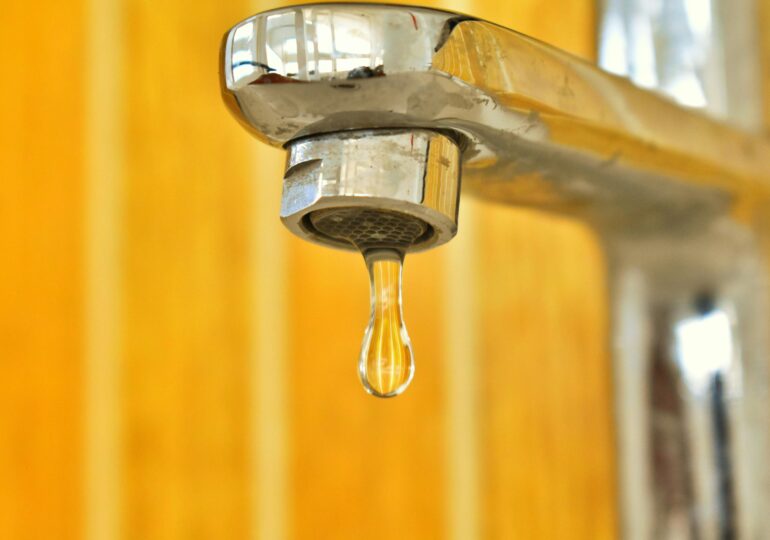In all Ukrainian regions under Russian occupation, Moscow faces the impossibility of ensuring one of the most basic needs for the population it claims to have „liberated” – drinking water.
Years of neglect and war-induced destruction have left the occupied areas in the Lugansk and Donetsk regions with nearly non-functional infrastructure, and in the more recently occupied territories of Herson and Zaporizhia, the destruction of the Kahovka dam by Russian forces in June 2023 has emptied the reservoirs. In occupied Crimea, partially supplied by the same reservoirs, a crisis looms after the second year of drought.
"It seems that people are intentionally kept in a state of survival, to stand in line for water and not think about politics, resistance, or protests," said an activist from the Yellow Ribbon movement in the occupied territories to Kyiv Independent.
The increasingly severe crisis coincides with Vladimir Putin's claims to obtain even more Ukrainian territory in potential peace negotiations mediated by the US, with American President Donald Trump reportedly willing to accept full Russian control over the Lugansk and Donetsk regions.
The lack of water is a direct result of Russian aggression, and although the Kremlin acknowledges the problem, it has not taken real measures to solve it.
Donetsk: Life Dictated by the Empty Tap
The problems are particularly acute in the occupied areas of Donetsk and Lugansk regions since 2014.
"The water problem is so serious that it's all you think about from morning till night," said a member of the Zla Mavka partisan group from Donetsk.
"In the Kirovsky district, we are almost completely out of water. There used to be a trickle for half an hour, now sometimes the tap is dry all day," she added.
Putin himself recently discussed the "crisis situation" with Denis Pushilin, the leader of the occupation administration in Donetsk, and supported reducing water prices.
Since the beginning of the occupation, water has been distributed according to an arbitrary schedule, often not adhered to. "What kind of schedule is that when your children don't have drinking water?" asked the same Zla Mavka member.
The large-scale invasion in 2022 exacerbated the crisis. "Until then, the water came from Ukrainian territory through the Severodonetsk-Donbas canal. In 2022, Russia destroyed the filtering stations, dams, and the canal. The attempt to replace it with a Don-Donbas pipeline failed - it cannot provide enough water," explained Elina Beketova, a research associate at the Center for European Policy Analysis (CEPA) Democratic Resilience Program.
The situation is so desperate that children in Donetsk have started recording video appeals to Putin, asking for water.
Lugansk: Water from Flooded Mines
In Lugansk, residents live in deprivation.
"When the fighting began, the water was cut off for three months. It was a disaster," said a woman originally from Lugansk, now in territory controlled by Kyiv. Her parents, remaining under occupation, carried water from a church fountain miles away.
Today, only 2.5% of the region's water network is still functional, according to Elina Beketova. Tap water is described as "poison," with rumors circulating that it comes from flooded mines.
"I know people who have installed filters. They break in a month, clogged with rust, metals, and lime," the same woman said.
The Yellow Ribbon activist claims that the Russian authorities "simply don't care." "The problem is widespread, but not even the minimum steps are taken. Russia spends on war, not on people's lives."
Herson and Zaporizhia: Damaged Dam and Dried Villages
In the south, in territories occupied after 2022, the destruction of the Kahovka dam has left the channels without water.
"The Kahovka reservoir was vital. Russian forces destroyed the pumping stations. Even if the water were to return, the channels need to be rebuilt from scratch," said Serhii Danilov, deputy of the Middle East Studies Association, specializing in the Herson region.
In July, in the village of Kairy, a fire was extinguished with only seven buckets of water collected from the street. "All fruit trees are dried up, people grow vegetables only for personal consumption," said a local.
The drought worsens the situation: "In Skadovsk, it hasn't rained for a month and a half," added Danilov.
Crimea: Peninsula on the Brink of Collapse
Even in occupied Crimea, where Russia has heavily invested, water reserves are "at the limit." The second year of drought and the drying of the North Crimean Canal threaten the peninsula.
"After the illegal annexation in 2014, Ukraine cut off access to the canal. It was temporarily reopened in 2022, but after the destruction of the Kahovka dam, the supply ceased," said Beketova.
Crimea's reservoirs have significantly depleted this summer, and local experts warn: "If it doesn't rain, by October, Crimea will face a severe water crisis."

